Arch Iran Med. 24(8):653-656.
doi: 10.34172/aim.2021.93
Obituary
Dr. Touraj Nayernouri (1943–2021) and his Fruitful Academic Life
Mohammad Hossein Azizi 1, *, Moslem Bahadori 1
Author information:
1Academy of Medical Sciences of the I.R. of Iran, Tehran, Iran
*Corresponding Author: Mohammad-Hossein Azizi, MD; Academy of Medical Sciences of the I.R. of Iran, Tehran, Iran. Tel: +98-212-293-9869, Email: azizi@ ams.ac.ir;
mhazizi.ent@gmail.com
Copyright and License Information
© 2021 The Author(s).
This is an open-access article distributed under the terms of the Creative Commons Attribution License (
https://creativecommons.org/licenses/by/4.0), which permits unrestricted use, distribution, and reproduction in any medium, provided the original work is properly cited.
Cite this article as: Azizi MH, Bahadori M. Dr. Touraj Nayernouri (1943-2021) and his fruitful academic life. Arch Iran Med. 2021;24(8):653-656. doi: 10.34172/aim.2021.93
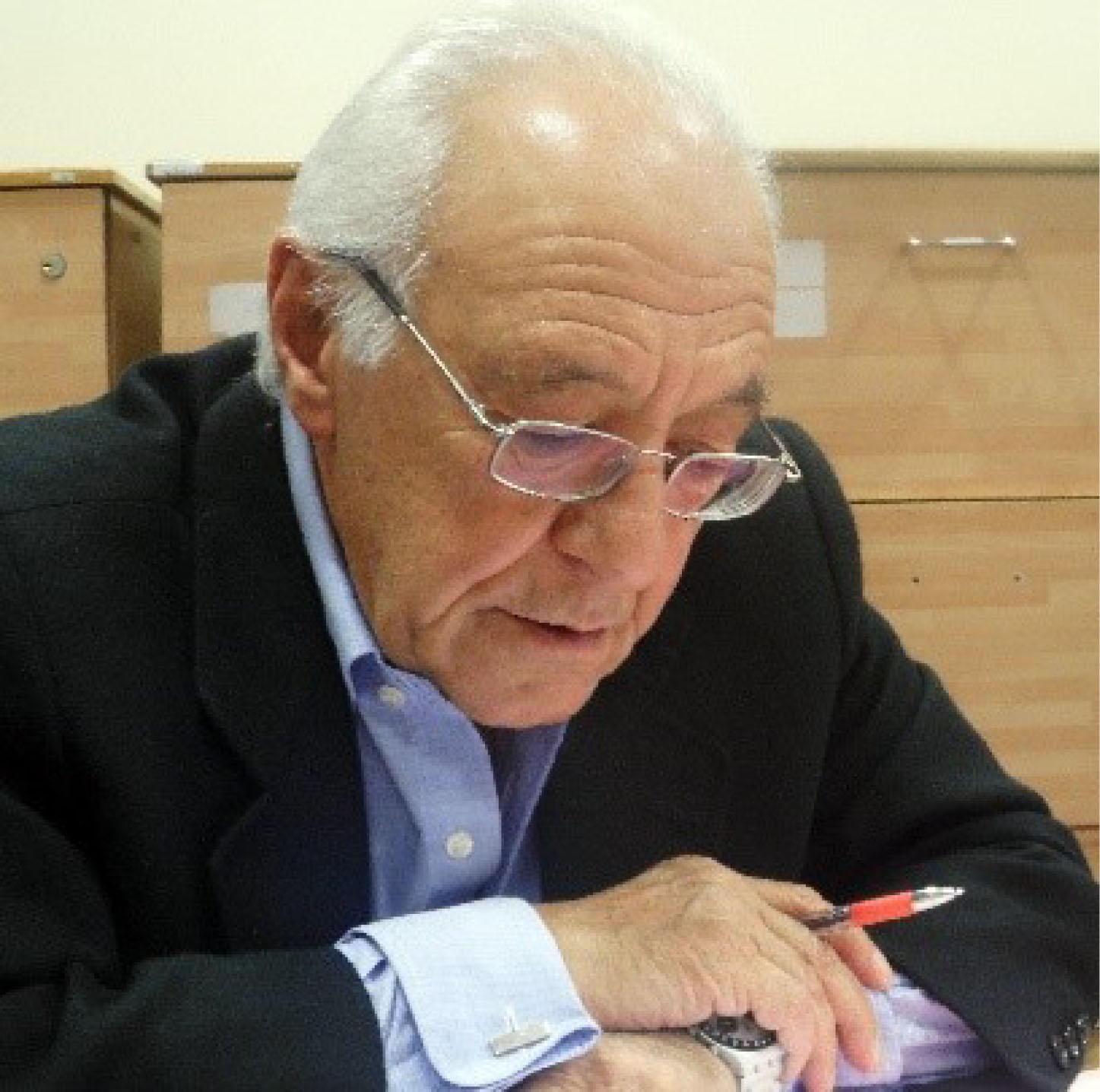
.
Touraj Nayernouri MD FRCS
Touraj Nayernouri MD FRCS
“He who lived with love never dies.”
Hafez, the great Iranian Poet (ca. 1315 – 1390)
It is with deep sorrow that we announce the passing away of Dr. Touraj Nayernouri on July 5, 2021 in Tehran due to COVID-19 at the age of 78. He was an outstanding neurosurgeon with a neurophysiological background. His demise is a great loss for his family, the Iranian medical community, in particular for neurosurgeons and the editorial team of the Archives of Iranian Medicine (AIM) Journal.
Touraj Nayernouri was born in Tehran on February 3, 1943. At the age of 12 (in 1955), he was sent by his family to England, first to a preparatory school in Ascot (Berkshire) and then to Public School in Shropshire. In due course, in 1963, he enrolled at the Trinity College in Dublin, where he initially obtained a B.A. degree in English literature, and subsequently, he studied medicine and received his MD diploma. His thesis subject was ‘The innervation of brown adipose tissue in newborn rabbits’. In 1972, he went to Canada as a post-doctoral fellow of Medical Research Council of Canada, at the Department of Physiology of University of Western Ontario and studied ‘the hypothalamic connections to the sympathetic neurons of the spinal cord’ and later became a resident of neurology at the University Hospital in Ontario. In 1975, he went to Glasgow, Scotland and later to Newcastle, England for his neurosurgical training, where he obtained his fellowship in general surgery as well as the fellowship in neurosuergery.1
He always loved his homeland and after his long training course in the high-ranking institutions abroad, he dreamed of returning to Iran to serve. At that time, he was 41 years old, active, energetic and very optimistic. On his return to Iran in July 1986, he joined the Medical Faculty of Iran University of Medical Sciences and practiced for several years at the Department of Neurosurgery in the Firoozgar educational Hospital, Tehran.
Since the first years of the establishment of the AIM Journal, he was an influential member of its editorial board and an active peer reviewer since April 2000 (Figure 1).
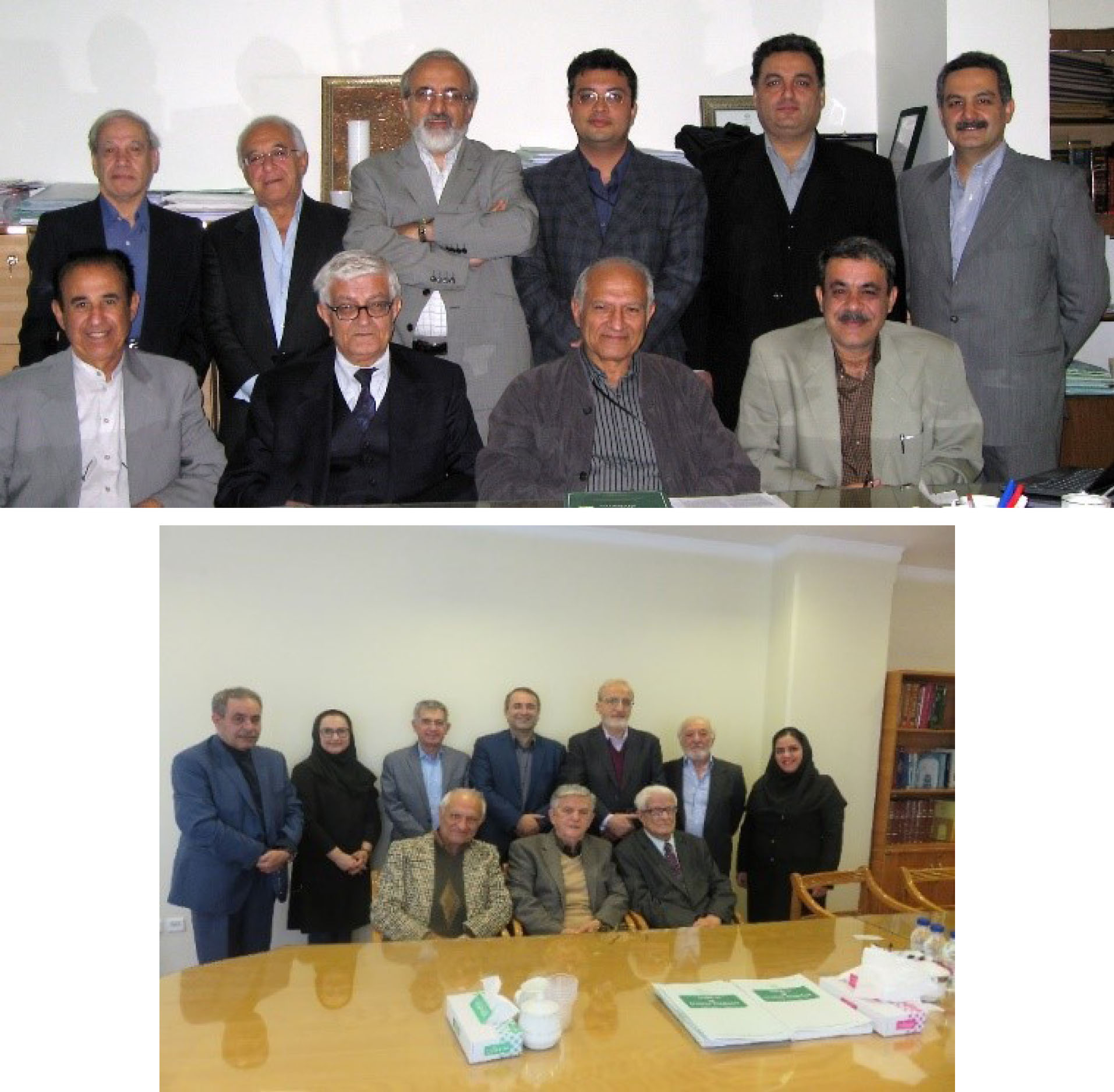
Figure 1.
Upper photo
Dr. Nayernouri standing, second from left and in lower photo,standing second from right, in two weekly meetings of the editorial team of the AIM Journal.
.
Upper photo
Dr. Nayernouri standing, second from left and in lower photo,standing second from right, in two weekly meetings of the editorial team of the AIM Journal.
Dr. Nayernouri was greatly interested in neuroscience and neurosurgery, history (Figure 2), especially history of medicine in Iran and literature as well as medical journalism. He always appreciated the scientific efforts of the Iranian medical pioneers (Figure 3). He was a prolific and creative author who wrote many articles in Persian and English. Several articles have been authored by Dr. Nayernouri which are indexed in the PubMed database.
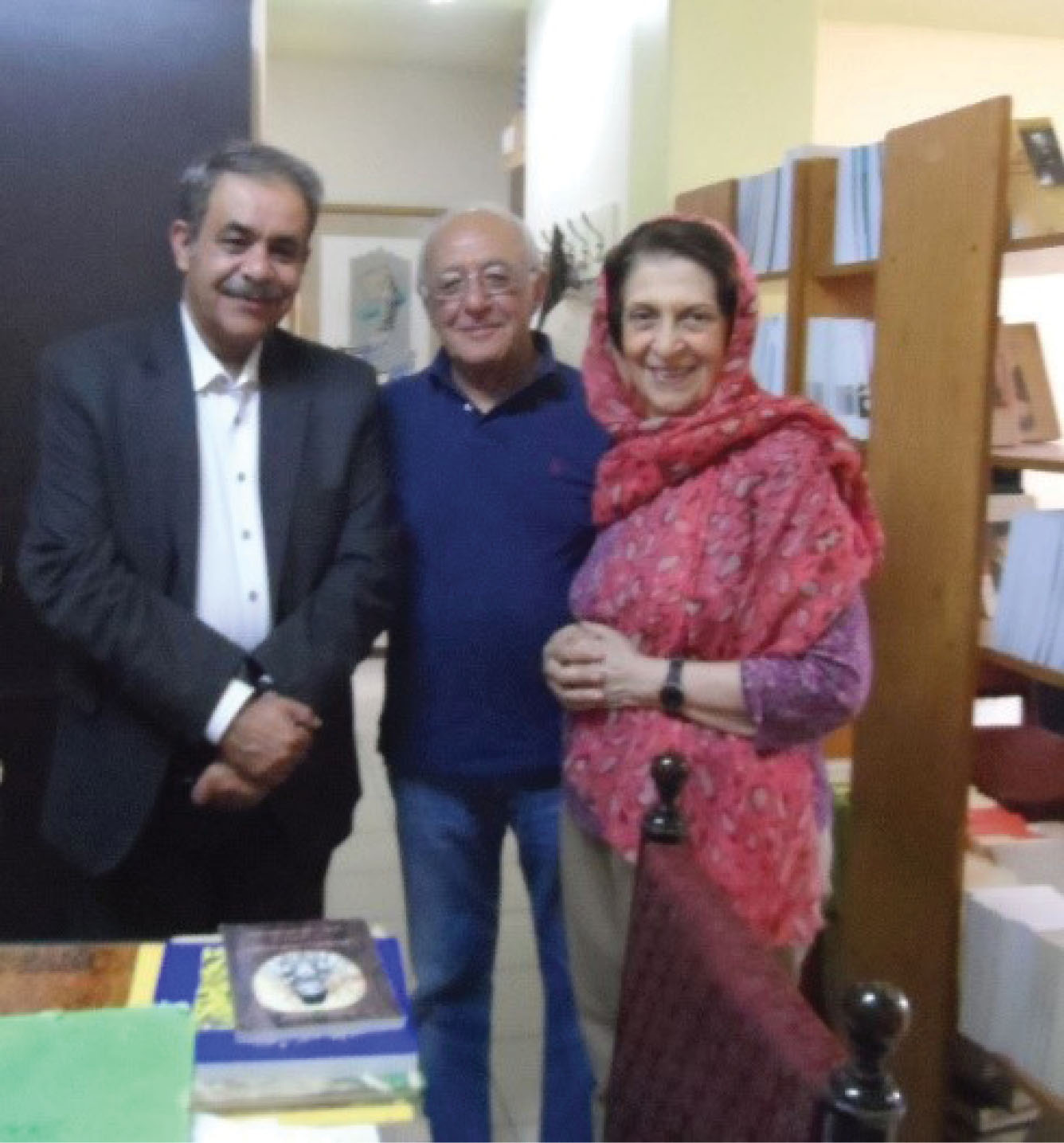
Figure 2.
Dr. Nayernouri and the author (M.H.A) in the office of Mrs. Mansoureh Ettehadieh, PhD of history from the University of Edinburgh, historian, publisher and the former professor of Tehran University.
.
Dr. Nayernouri and the author (M.H.A) in the office of Mrs. Mansoureh Ettehadieh, PhD of history from the University of Edinburgh, historian, publisher and the former professor of Tehran University.
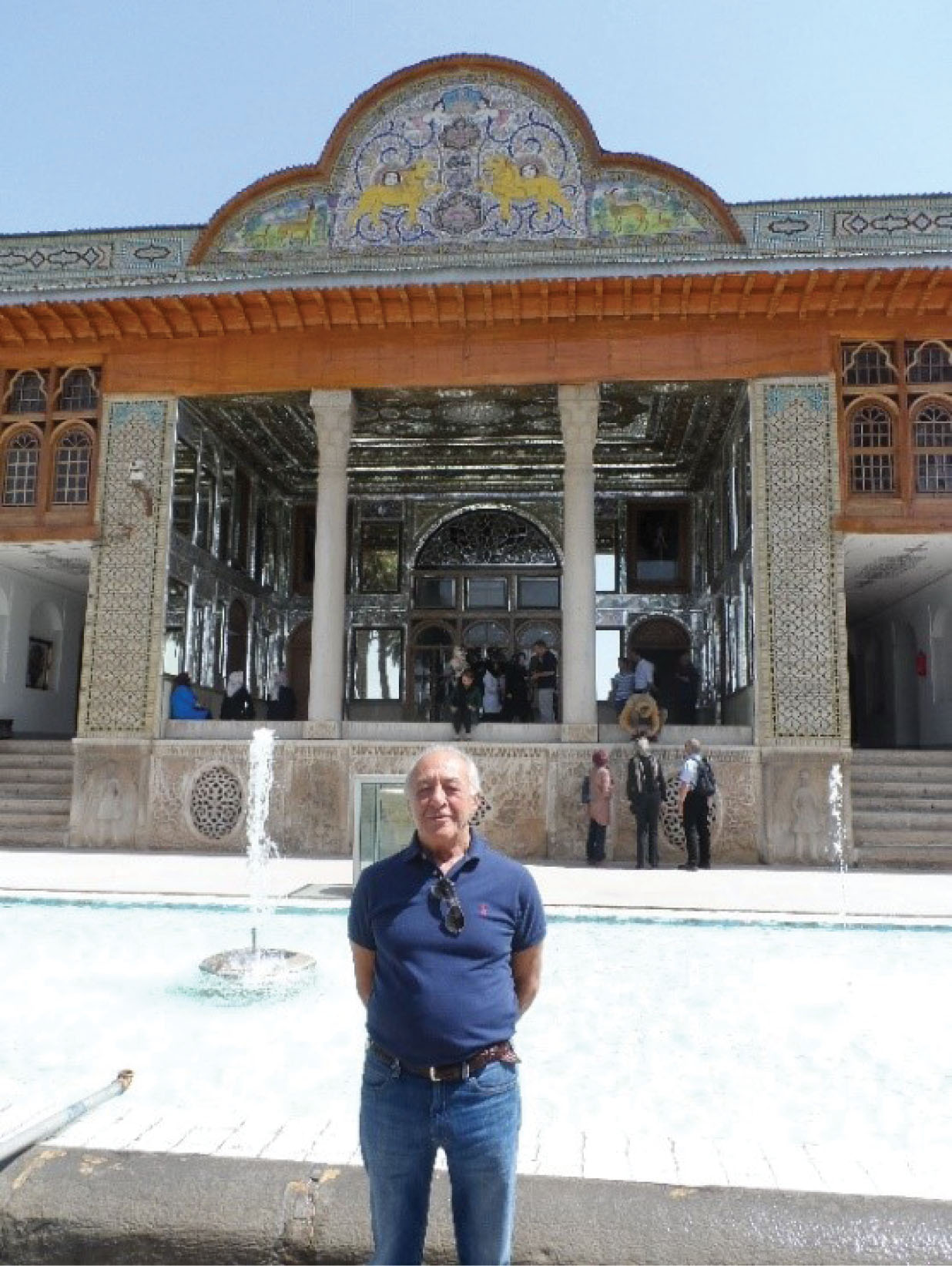
Figure 3.
In a ceremony which was held in Shiraz in honor of Professor Farrokh Saidi in 2014, Dr. Nayernouri also participated. He visited historical places in Shiraz, including Naranjestan-e Qavam.
.
In a ceremony which was held in Shiraz in honor of Professor Farrokh Saidi in 2014, Dr. Nayernouri also participated. He visited historical places in Shiraz, including Naranjestan-e Qavam.
His last paper, which he wrote just before his recent illness in 2021, entitled ‘The Expectant Brain and the Placebo Magic. Does it have a Survival Value?’ appeared in the pervious issue of the AIM journal. In 2017, he collected his articles, mainly on the history of Medicine in Iran as well as a few essays on science in a book entitled: “Iranian Medical Histories and other Essays” (Figure 4a). The book consists of two parts. The first part deals with the history of medicine in Iran and the second part contains the following essays:
-
Fraud and dishonesty in scientific publication
-
Bias in science
-
Concepts in physics
-
Kwarazmi, Algebra, zero and the decimal system
-
-Science seeks the how, not the why. It deals with reality, not with truths.
The above -mentioned topics clearly show the scientific concerns of Dr. Nayernouri, as in the introduction of his book he stated, “The final few essays have touched upon science and its relation to reality and truth, a subject that concerns me deeply.”He also delivered several scientific lectures at seminars ranging from evolution and animal behavior to cognitive neuroscience.1 He also wrote a book in Persian entitled: “The Character of Rostam in Shahnameh” (Figure 4b).
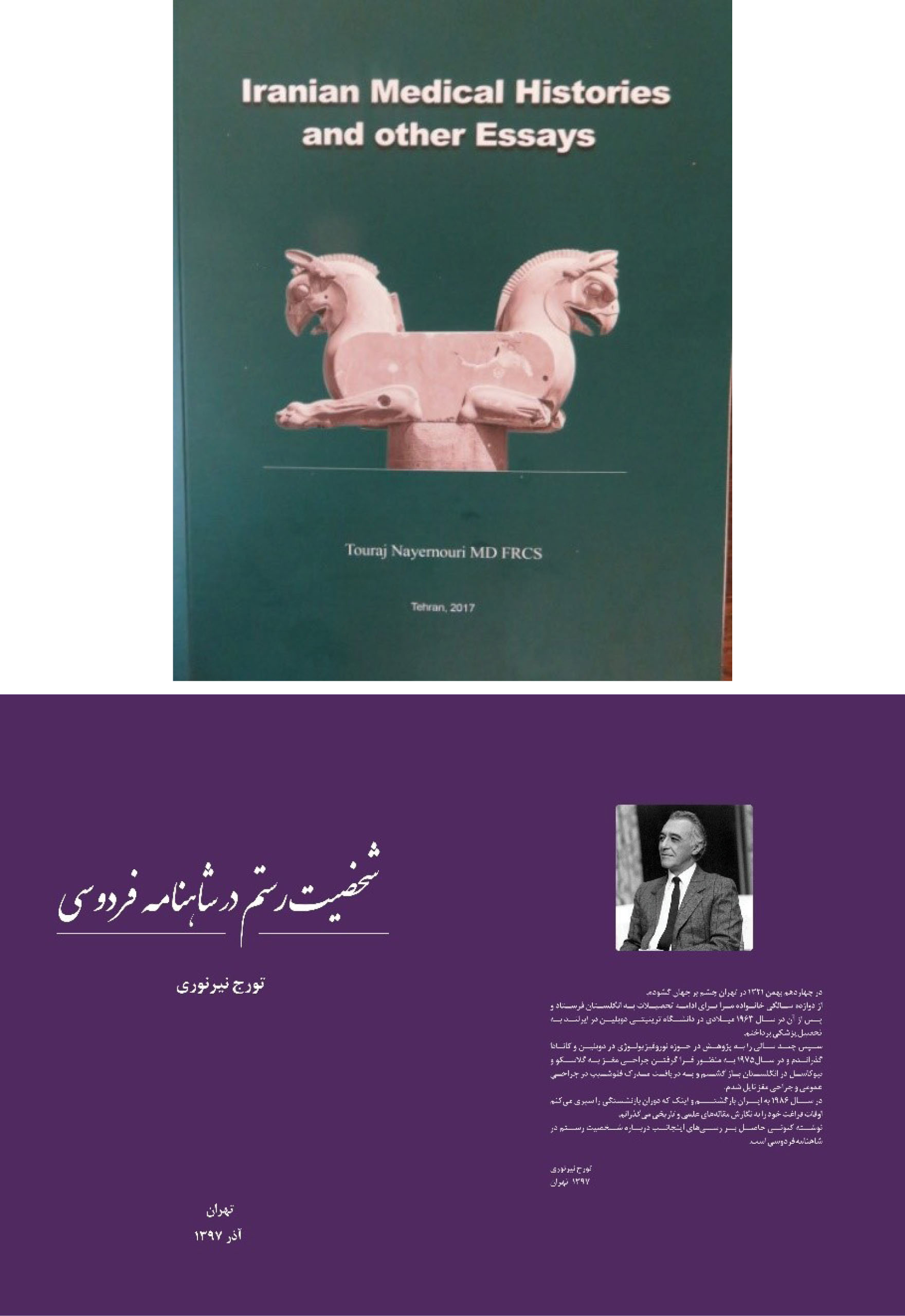
Figure 4.
(a) Front cover of “Iranian Medical Histories and other Essays” by Dr. Nayernouri, 2017.The picture on the front cover of the book shows the Homay bird from Persepolis, may represent the mythical bird ‘Simurgh’ which he attempted to encourage to replace the Asclepian serpent as the Iranian medical symbol. (Nayernouri T. Simurgh as a medical symbol for Iran. Middle East J Dig Dis.2010 Jan; 2(1):49-50.
1
(b) The Character of Rostam in Shahnameh written in Persian by Dr. Nayernouri.
.
(a) Front cover of “Iranian Medical Histories and other Essays” by Dr. Nayernouri, 2017.The picture on the front cover of the book shows the Homay bird from Persepolis, may represent the mythical bird ‘Simurgh’ which he attempted to encourage to replace the Asclepian serpent as the Iranian medical symbol. (Nayernouri T. Simurgh as a medical symbol for Iran. Middle East J Dig Dis.2010 Jan; 2(1):49-50.
1
(b) The Character of Rostam in Shahnameh written in Persian by Dr. Nayernouri.
Dr. Nayernouri and his Colleagues’ Works on PubMed, between 1971 and 2020:
-
Nayernouri T. Cyril Elgood “a medical history of Persia”: a critique. Arch Iran Med. 2020;23(5):359-61. doi: 10.34172/aim.2020.27.
-
Danaei G, Farzadfar F, Kelishadi R, Rashidian A, Rouhani OM, Ahmadnia S, et al. Iran in transition. Lancet. 2019;393(10184):1984-2005. doi: 10.1016/s0140-6736(18)33197-0.
-
Nayernouri T. Homeopathy, ritual and magic. Arch Iran Med. 2018;20(11):718-22.
-
Sheibani M, Nayernouri T, Dehpour AR. Herbal medicines and other traditional remedies in Iran - a tragedy unfolds. Arch Iran Med. 2018;21(7):312-4.
-
Nayernouri T. The writing of Iranian medical history. Arch Iran Med. 2017;20(6):390.
-
Nayernouri T. Gondeshapur revisited; what historical evidence? Arch Iran Med. 2017;20(4):254-60.
-
Nayernouri T. Borzuyeh e Tabib (The Iranian Physician). Arch Iran Med. 2016;19(4):300-4.
-
Kabir K, Bolhari J. Are service deliveries studies a priority of mental health research in Iran? Arch Iran Med. 2015;18(8):556-7.
-
Azizi MH, Nayernouri T, Bahadori M. The history of the foundation of the Iranian national blood transfusion service in 1974 and the biography of its founder; professor Fereydoun Ala. Arch Iran Med. 2015;18(6):393-400.
-
Nayernouri T. A brief history of ancient Iranian medicine. Arch Iran Med. 2015;18(8):549-51.
-
Nayernouri T. Absence of evidence or evidence of absence? Reply. Arch Iran Med. 2014;17(2):136-7.
-
Nayernouri T. Author’s reply: to PMID 24329147. Arch Iran Med. 2014;17(11):792.
-
Nayernouri T. Sense and nonsense in the practice of medicine a critique of traditional Iranian medicine. Arch Iran Med. 2013;16(12):731-5.
-
Nayernouri T. Iranian or Arab scholars? Arch Iran Med. 2011;14(2):144-5.
-
Nayernouri T. Euthanasia, terminal illness and quality of life. Arch Iran Med. 2011;14(1):54-5.
-
Nayernouri T, Azizi MH. History of medicine in Iran the oldest known medical treatise in the Persian language. Middle East J Dig Dis. 2011;3(1):74-8.
-
Rezayof A, Sardari M, Zarrindast MR, Nayernouri T. Functional interaction between morphine and central amygdala cannabinoid CB1 receptors in the acquisition and expression of conditioned place preference. Behav Brain Res. 2011;220(1):1-8. doi: 10.1016/j.bbr.2011.01.023.
-
Nayernouri T. Asclepius, Caduceus, and Simurgh as medical symbols, part I. Arch Iran Med. 2010;13(1):61-8.
-
Motevasseli T, Rezayof A, Zarrindast MR, Nayernouri T. Role of ventral hippocampal NMDA receptors in anxiolytic-like effect of morphine. Physiol Behav. 2010;101(5):608-13. doi: 10.1016/j.physbeh.2010.09.013.
-
Nayernouri T. Simurgh as a medical symbol for iran. Middle East J Dig Dis. 2010;2(1):49-50.
-
Nayernouri T. Asclepius, Caduceus, and Simurgh as medical symbols; part II. Simurgh. Arch Iran Med. 2010;13(3):255-61.
-
Rezayof A, Shirazi-Zand Z, Zarrindast MR, Nayernouri T. Nicotine improves ethanol-induced memory impairment: the role of dorsal hippocampal NMDA receptors. Life Sci. 2010;86(7-8):260-6. doi: 10.1016/j.lfs.2009.12.008.
-
Nasehi M, Piri M, Nouri M, Farzin D, Nayernouri T, Zarrindast MR. Involvement of dopamine D1/D2 receptors on harmane-induced amnesia in the step-down passive avoidance test. Eur J Pharmacol. 2010;634(1-3):77-83. doi: 10.1016/j.ejphar.2010.02.027.
-
Pakpour B, Ahmadi S, Nayernouri T, Oryan S, Zarrindast MR. Inhibitory avoidance memory deficit induced by scopolamine: interaction with glutamatergic system in the nucleus accumbens. Behav Pharmacol. 2010;21(8):719-26. doi: 10.1097/FBP.0b013e32833fa785.
-
Nayernouri T. The Iranian connection. Arch Iran Med. 2009;12(4):339-40.
-
Nayernouri T. Fraud and dishonesty in “scientific” publication. Arch Iran Med. 2009;12(1):1-4.
-
Nayernouri T. Zakariya Razi: the Iranian physician and scholar. Arch Iran Med. 2008;11(2):229-34.
-
Azizi MH, Nayernouri T, Azizi F. A brief history of the discovery of the circulation of blood in the human body. Arch Iran Med. 2008;11(3):345-50.
-
Azizi MH, Nayernouri T. The establishment and the first four decades of the activities of the Pasteur Institute of Iran. Arch Iran Med. 2008;11(4):477-81.
-
Nayernouri T. Posttraumatic parkinsonism. Surg Neurol. 1985;24(3):263-4. doi: 10.1016/0090-3019(85)90035-7.
-
Nayernouri T. Neurilemomas of the cauda equina presenting as prolapsed lumbar intervertebral disks. Surg Neurol. 1985;23(2):187-8. doi: 10.1016/0090-3019(85)90343
-
Gates P, Nayernouri T, Sengupta RP. Epileptic pain: a temporal lobe focus. J Neurol Neurosurg Psychiatry. 1984;47(3):319-20. doi: 10.1136/jnnp.47.3.319.
-
Henderston TC, Luckwill RG, Nayernouri T. Single unit responses to temperature change in the brain of newborn rabbits. Int J Biometeorol. 1971;15(2):309-12. doi: 10.1007/bf01803917.
In summary, although he passed away, his memory will remain alive in the Iranian medical community, among neurosurgeons and the editorial team of the AIM Journal (Figure 5). Dr. Nayernouri was a scientist physician with high morals, who loved kindness, beauty, goodness and truth.
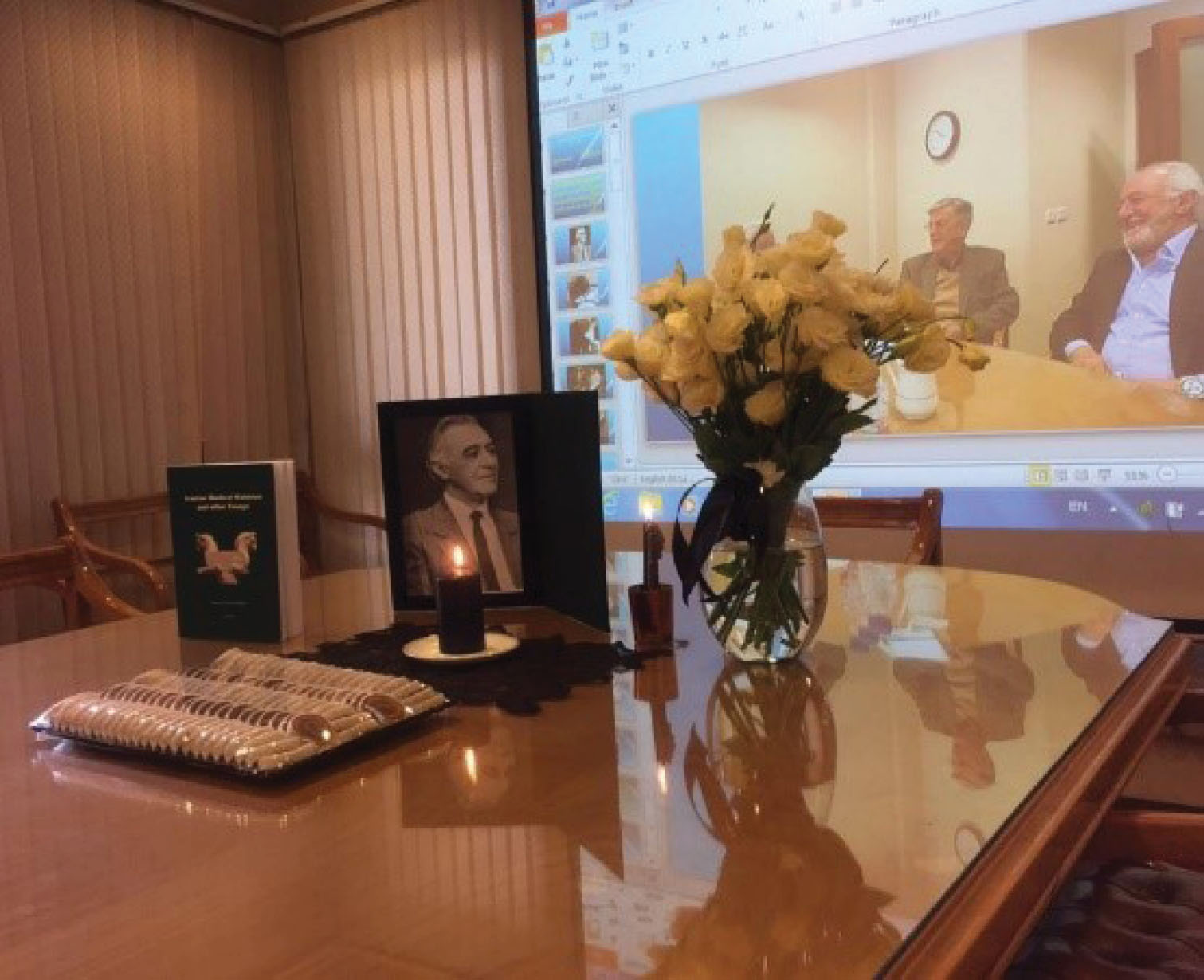
Figure 5.
Memorial of the Late Dr. Nayernouri at the AIM office, Wednesday, July 7, 2021 (With special thanks to Miss Shokoufeh Borzabadi PhD, executive director of the AIM).
.
Memorial of the Late Dr. Nayernouri at the AIM office, Wednesday, July 7, 2021 (With special thanks to Miss Shokoufeh Borzabadi PhD, executive director of the AIM).
References
- Nayernouri T. Iranian Medical Histories and other Essays. Tehran: The author; 2017.
- Dr. Nayernouri’s articles. Available from: https://pubmed.ncbi.nlm.nih.gov/?term=Nayernouri+T. Accessed date 8 July 2021.